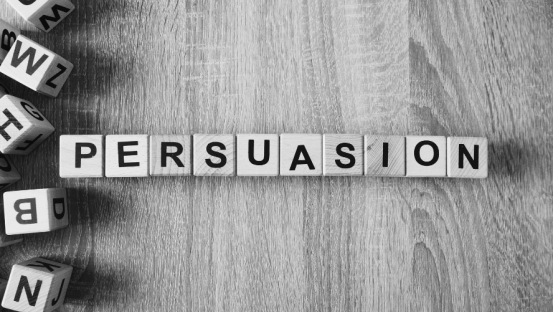Top 7 experiential marketing ideas to engage attendees at your next conference

As an event organizer in 2018, it is important to create more meaningful, long-term relationships with customers, clients and/or business partners.
Many organizers are turning to experiential marketing in order to improve engagement, and the results can be surprisingly impressive.
The EventTrack 2015 Consumer Survey Report found that 98% of consumers feel more inclined to buy a product after participating in an event, while 65% go on to purchase the product or service promoted.
This figure marks an increase from 2017, suggesting experiential marketing is gaining in effectiveness and popularity.
Aside from improving ticket sales results, experiential marketing can also boost organizer recognition and improve an organization's reputation.
Yet, many event organisers struggle to come up with compelling experiences to offer.
In this article, we offer seven of the best experiential marketing ideas for use at your next conference.
1. Photo Booths

Photo booths have become an event company staple in 2018 and for good reason: not only can photo booths help to create a memorable moment for attendees, they can also allow them to capture it, and look back on it for years to come.
This is a great way to build positive lasting memories, which they’ll associate with your event.
There are a variety of types of event booth to choose from, from themed photo booths to GIF generators.
Check out these two examples:
As a further benefit, photo booths can provide users with digital copies and can be set up with built-in social media integration, allowing attendees to share photos, and spread the word about your event — instantly.
2. Virtual Reality

Virtual reality (VR) and augmented reality (AR) are emerging as major breakout technologies in the past few years.
According to research from Statista, the VR and AR industry is expected to reach a market size of 200 billion US dollars by 2022. However, home adoption is still low enough for there to still be a novelty element.
In addition to this novelty component, VR and AR allow marketers and professional exhibition stand builders to change attendees' perceptions of their surroundings, providing a truly memorable experience.
There is also potential here for the virtual or augmented environment to be branded, associating your business with the experience.
As an example of the ways the technology can be used, Topshop made use of VR headsets during an AW 14 Fashion Week event.
By wearing the headsets, users were virtually transported to the first row of a fashion show.
A video showcasing this experience can be found here.
3. Gamification

One of the best ways to introduce a sense of excitement to an event is through gamification and the options here are almost endless.
Most attendees will be carrying smartphones, while an event company may also be able to hire games consoles, arcade machines, VR headsets and other equipment to facilitate this.
It is important to understand that gamification does not need to be limited to guests enjoying video game type experiences, however. There are other options available too.
For example, Volkswagen made effective use of gamification with their Piano Staircase, which allowed people to play tunes as they moved up and down the stairs, linking the brand to a fun experience.
Similar concepts can easily be brought into the event space, especially at conferences and exhibitions.
4. Demonstrations

Events and conferences are held for many reasons and one of these is to increase sales.
Those carrying out an experiential marketing campaign can work towards achieving this by offering demonstrations, samples, free trials and other 'try before you buy' options to attendees.
In the United Kingdom, the toothpaste brand Sensodyne made effective use of a demonstration by setting up a Sensitivity Test near Tower Bridge.
A dentist checked the sensitivity of visitors' teeth, they saw demonstrations of how to clean teeth properly, they viewed an oral hygiene lesson and were given free samples.
Over the course of the campaign, more than 6,000 samples were distributed and the demonstrations gained mainstream media attention.
The same principle can easily be applied to conferences and events. The key is for event organisers to keep their demonstrations relevant and on-brand.
5. Experiential Catering

Many events require catering, but even the provision of food and drink can be turned into the kind of memorable experience that helps to generate positive associations with your event.
The precise catering experience you choose to offer will likely depend on the nature of your business and the objectives of your event.
Nevertheless, some of the most common examples include cooking classes and live cooking displays. MAYA and Oreo, for example, once teamed up to offer 3D-printed, customisable Oreo cookies.
6. Prize Giveaways

For many companies, a key aim for their event is to provide a sense of fun.
This is why businesses invest so heavily in design teams and exhibition stand builders who can create compelling booths that capture the imagination of attendees, while also conveying core brand values.
However, another excellent way to add a sense of fun is to include a competition, quiz, raffle or prize giveaway. Not only can this help to make an event more enjoyable for those who take part, it also offers a way to provide a select few attendees with the intensely memorable experience of winning a prize.
7. Charitable Acts

Finally, one of the best ways for organisers to engage attendees, provide them with a positive experience and portray their event in a positive light is through charitable acts.
In fact, according to Inc.com, customers are 85% more likely to buy a product that is associated in some way with a charity, or with charitable acts.
When it comes to providing an experiential component, the key is to involve event attendees in the decision-making process.
A great example of this kind of marketing is Google's Building a Better Bay Area campaign, which made use of clickable posters, allowing passers-by to decide which charities would receive money.
For best results, focus on local charities or causes, as these will feel more personal and relevant to your guests.
Wrapping up
Attendee engagement at conferences and events is a key issue for planners, and experiential marketing strategies can help to improve this. Employing some of the seven ideas above can help you to achieve your goals, while simultaneously improving the overall experience for your guests.
About the Author:
Reno is a founder and director of a leading exhibition and event company Enigma Visual Solutions, specialising in modular exhibition stands, event organizing, event production, exhibition services and much more. He enjoys sharing his thoughts on upcoming marketing ideas and design trends. Feel free to follow him on Twitter.







